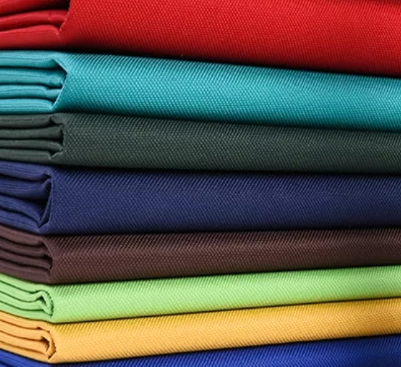What Are You Looking For?
Silicone defoamer: the "invisible guard" of efficient production in the textile industry
May 30, 2025In the noisy workshops of textile production, an "invisible force" is increasingly becoming the key to ensuring efficient and high-quality production - it is silicone defoamers. With its excellent defoaming and anti-foaming performance and good ecological characteristics, this type of specialty chemicals is quietly innovating many key links in textile printing and dyeing.

Foam: a stubborn obstacle in textile production
In textile processing, foam is everywhere and has many problems. From desizing, scouring, and rinsing in fabric pretreatment, to the core dyeing and printing processes, to the finishing stage, intense mechanical stirring, high temperature environment, and the use of various surfactants and auxiliaries are very likely to produce a large amount of stubborn foam. These foams not only reduce production efficiency and occupy the effective volume of equipment, but also directly cause color spots and white spots on the fabric surface, resulting in serious quality problems such as uneven dyeing and blurred printing, which directly affect the qualified rate and added value of the final product.
Professional textile silicone defoamers: a powerful tool to overcome obstacles
Faced with the limitations of traditional defoamers (such as mineral oils and polyethers) in durability, compatibility or efficiency, silicone defoamers stand out and become the preferred solution for modern textile factories:
1. Efficient foam breaking and long-lasting foam suppression: The extremely low surface tension of silicone molecules enables them to spread quickly on the foam liquid film and efficiently puncture the foam. Its chemical stability ensures that it can still play a long-term anti-foaming role under harsh textile processing conditions such as high temperature, strong shear, and a wide pH range (such as strong alkaline scouring liquid). Products from well-known companies such as Chuanhua Chemical and Wacker Chemical are optimized for such environments.
2. Improve process stability and product quality: Effectively eliminate foam interference, ensure uniform penetration and distribution of dyeing liquid and printing slurry on the fabric, significantly reduce the defective rate of color flowers, color differences, printing defects, etc., and improve the first-class rate of fabrics. This is especially important in high-speed jet dyeing machines and continuous pad dyeing production lines.
3. Optimize production efficiency and energy conservation and emission reduction: Avoid downtime and cleaning caused by foam overflow, and ensure the smooth progress of continuous production. Eliminate the ineffective space occupied by foam, improve the effective utilization rate of equipment such as dyeing vats, and indirectly reduce energy and water consumption per unit output.
4. Good ecological and safety characteristics: Modern high-quality silicone defoamers usually have low toxicity, low COD/BOD, and biodegradable (such as products that meet the EU Eco-Passport or Bluesign standards), which conform to the increasingly stringent environmental regulations (such as China's dual carbon goals, the EU's Green New Deal) and sustainable development requirements of the global textile industry.
Extensive and in-depth application scenarios
Pretreatment: Stable defoaming in processes that produce intense foam such as strong alkali scouring and hydrogen peroxide bleaching.
Dyeing: Applied to dip dyeing and roll dyeing, especially in high-flow jet overflow dyeing machines.
Printing: Ensure that the printing paste does not foam in high-speed rotary screen, flat screen printing or digital inkjet printing to ensure pattern clarity.
Finishing: Preventing the impact of foam in functional finishing such as coating and padding softener.
Wastewater treatment: Used to treat textile printing and dyeing wastewater with high foam.
Market prospects and innovation direction
According to a report by Fortune Business Insights, the global textile chemicals market continues to grow, with strong demand for efficient and environmentally friendly auxiliaries. As an important branch, silicone defoamers are expected to maintain an average annual compound growth rate of about 5.2% between 2023 and 2030. The research and development direction focuses on: developing products that are more suitable for extreme processes (such as ultra-high temperature and strong oxidant environments); further improving the biodegradability and environmental friendliness of products; and exploring intelligent responsive (such as pH/temperature sensitive) defoamers to improve accuracy.
Industry Viewpoint
"In today's pursuit of high-quality, high-efficiency and green production, choosing an efficient and environmentally friendly defoamer is crucial for textile companies," said a senior textile chemical engineer. "Silicone defoamers have become the mainstream solution to solve stubborn foam problems and improve overall production efficiency due to their comprehensive performance advantages."
Conclusion
From overcoming production obstacles to improving product quality, and then to responding to the green manufacturing wave, silicone defoamers have been deeply integrated into the core chain of the modern textile industry. With the iterative upgrading of technology and the continuous expansion of application scenarios, this "invisible guard" will continue to provide indispensable chemical kinetic energy for the quality improvement, efficiency enhancement and sustainable development of the textile industry.